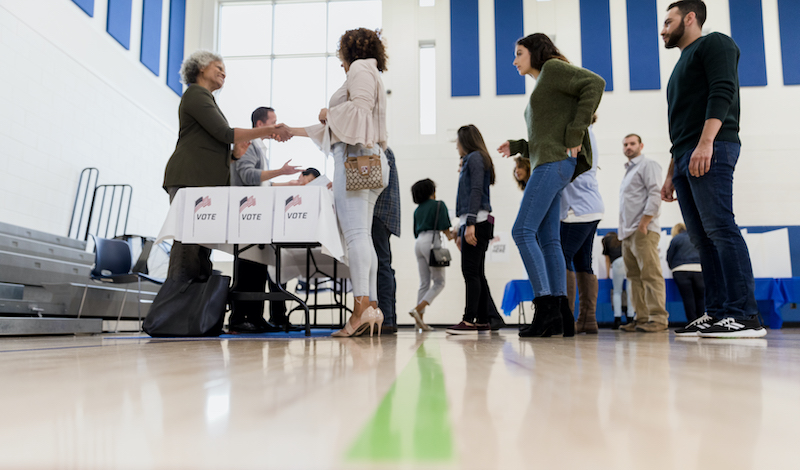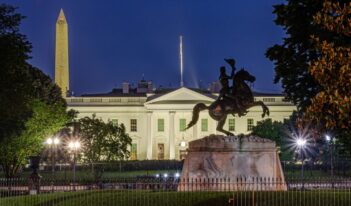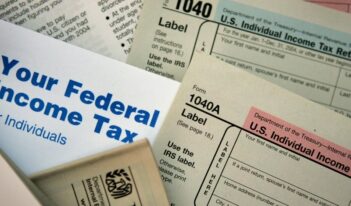
Increased voter participation requires a regulatory system that invites public engagement.
The regulatory system, contrary to the claims of its conservative critics, is an indispensable part of the broader civic infrastructure on which our democracy is built. Significantly, the ability to exercise voting rights—the most visible and potent act of civic engagement—necessitates a stronger and more inclusive regulatory system.
Effective civic engagement is a skill that requires practice to develop and maintain, not unlike playing piano or speaking a foreign language. This reality is especially true of voting, which involves more than just turning out for elections. Discerning voters must understand the issues at stake, demand high-quality candidates, and monitor public officials’ performance to hold them accountable.
Observers of the United States’ constitutional system of governance have long praised the wide variety of social institutions that allow us to hone our civic engagement skills. Nearly 200 years ago, Alexis de Tocqueville marveled at the vast array of civic associations in the United States, famously calling them our “schools of democracy.”
Today, the regulatory system stands as one of the most important of these Tocquevillian schools of democracy, although few might think of it in these terms. Indeed, the regulatory system could better serve Americans and our democracy in this experiential learning role by making it more people-centered and inclusive.
A defining attribute of this system is the myriad opportunities it offers for public participation throughout the policy process, from agenda-setting through enforcement. The notice-and-comment process that attends informal rulemaking under the Administrative Procedure Act (APA) is perhaps the best known of the ways people can play an active role in the regulatory system. Other participatory opportunities include the ability to petition agencies to initiate rulemakings, serve on advisory committees, and file “citizen suits” to enforce rule violations.
Importantly, many agencies go beyond the minimally required participatory opportunities and seek more public input by issuing requests for information, organizing focus groups, and holding rulemaking hearings open to the public.
This variety of participatory opportunities empowers individuals to find their niche and cultivate their “civic persona.” Substantively, people can focus their energies on policy issues they find compelling, such as climate change, student debt justice, or fair housing. And the manner of participation can vary according to different skills, talents, and interests. People can, for instance, participate as community organizers or citizen scientists, or by sharing their experiences.
Regulatory participation also offers a “thicker” form of civic engagement than voting. By its nature, participation in this system is ongoing and continuous, especially when compared to voting, which is episodic and disjointed. Indeed, participating in agency rulemaking enables direct engagement with government between casting ballots. This form of participation allows for deeper and more substantive public engagement than the binary choices presented on the ballot; the regulatory process invites people to shape the finer details of policy outcomes that affect their lives.
Of significance to voting rights advocates, those people with more fully developed civic personas are much more likely to vote, to engage in other forms of civic engagement, and to use the power of their vote skillfully. These individuals are also more likely to recognize the intrinsic value of civic engagement and to be committed allies in the fight for safeguarding Americans’ access to the ballot.
A strong, public-driven regulatory system supports voter participation in yet another way—one that is subtle and indirect but nevertheless important. The regulatory system protects people from risks against which they cannot effectively or reasonably protect themselves individually. When people do not have to worry about whether the water coming out of the faucet is safe to drink or whether the money they put in a bank tonight will be there tomorrow morning, they have more time to share the joys of family and friends, participate in the economy, and serve the community.
Regulatory protections enhance freedom—they are a source of empowerment, not a burden.
One way regulations do this is by creating the conditions necessary for active and robust civic engagement, including voting. At the most basic level, unchecked air pollution, unhealthy working conditions, and other harms leave some people too sick or incapacitated to cast a ballot—particularly in areas where polling place closures, usually in lower-income communities of color, force people to travel long distances or stand in lines for hours to vote.
In addition, our regulatory system reinforces the social safety net, strengthening programs that provide health insurance to low-income people, cash to food-insecure children and families, and other essential supports. And it continues to do so despite sustained attacks that have left it brittle and frayed. Very few Americans are insulated completely from the ill effects of economic calamity, such as when a workplace injury deprives a family of its main income earner or when an unscrupulous lender drains a family of its life savings. Yet, by helping to avert such disasters in the first place, the regulatory system stands ever ready to complement the stabilizing efforts of our social safety net.
Reinforcing the social safety net through regulation is crucial to voter turnout as social and economic disenfranchisement leaves people little ability or incentive for civic engagement.
Of course, the regulatory system is not living up to its democratic potential, and existing public participation mechanisms do not adequately ensure all voices are heard—particularly those in structurally marginalized communities. Corporate special interests dominate the most influential avenues for public input, while working families and marginalized communities face significant barriers to participation.
More problematically, existing procedures rest on an unrealistic expectation of people’s capacity to engage in participatory opportunities on their own initiative. Agencies cannot operate as passive receptacles of public input because this posture effectively excludes many of those affected most directly by regulatory actions.
In sum, the fights for voting rights and to democratize our regulatory system are intimately connected. Advocates for both should join forces and work collaboratively to ensure all aspects of our constitutional system of democracy live up to the vision of government “by the people.”




